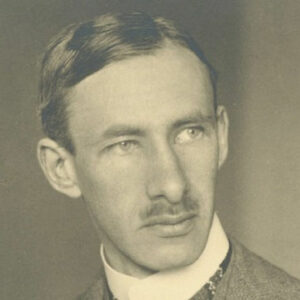Paul Isaac Bernays was a renowned Swiss mathematician who made significant contributions to mathematics philosophy and pioneered the field of mathematical logic. The proof theory and axiomatic set theory were two of his most important contributions. He was born in London and raised in Paris and Berlin. As a child, he demonstrated an early aptitude for music, ancient languages, and mathematics. He majored in mathematics in college and also studied philosophy and theoretical physics as electives. He received his doctorate in mathematics from the University of Berlin at the age of 24. He also earned his Habilitation and became a Privatdozent at the University of Zurich. He soon became David Hilbert’s research assistant, assisting him in his investigation of the foundations of arithmetic. He eventually received the Venia Legendi at the University of Göttingen but was forced to resign due to his Jewish ancestry during the Second World War. He eventually settled in Switzerland, teaching at the Eidgen ossische Technische Hochschule in Zurich. He is best remembered for his joint two-volume work with Hilbert, ‘Grundlagen der Mathematik’ (1934–39), and his 1958 Axiomatic Set Theory.
Childhood & Adolescence
Paul Bernays was born in London on October 17, 1888. He was the son of Swiss businessman Julius Bernays and Sarah Brecher. He grew up in a happy family with a younger brother and three younger sisters.
He attended the Kolnisches Gymnasium from 1895 to 1907. He demonstrated a strong interest in music and developed into an incredibly gifted pianist. He later developed an interest in music composition.
He also spent about a half-year studying at the Technische Hochschule Charlottenburg. He also enjoyed studying ancient languages and mathematics during his school years.
After high school, he enrolled at the University of Berlin, where he spent four semesters studying mathematics with Issai Schtur, Landau, Frobenius, and Schottky; philosophy with Riehl, Stumpf, and Cassirer; and physics with Max Planck.
He then spent six semesters at Gottingen, majoring in mathematics and minoring in philosophy and theoretical physics. He attended lectures primarily by Hilbert, Landau, Weyl, and Klein in mathematics; Voigt and Born in physics; and Leonard Nelson in philosophy.
Career of Paul
Paul Bernays earned a doctorate in mathematics from the University of Berlin in 1912. Under Landau’s supervision, he completed his doctoral dissertation on the analytic number theory of binary quadratic forms.
Later that year, he received his Habilitation from the University of Zurich for work on complex analysis and Picard’s theorem, which he completed under the supervision of professor Zermelo.
From 1912 to 1917, he was a Privatdozent at the University of Zurich. During this time period, he met Georg Polya, Albert Einstein, and Hermann Weyl.
In 1917, Hilbert invited him to assist him in his research into the mathematical foundations. He returned to Gottingen for the job and assisted Hilbert in preparing lectures and notes.
He also lectured on mathematics at Gottingen University, where he was awarded the Venia Legendi in 1919.
He was appointed extraordinary professor without tenure at Gottingen in 1922. He also attended lectures by Emmy Noether, van der Waerden, and Herglotz, among others, preferring to learn through listening rather than reading.
He was denied a Venia Legendi position at the University of Gottingen in 1933 due to his Jewish ancestry. Hilbert hired him privately as a six-month assistant. The family later relocated to Switzerland.
He was employed as a provisional teacher at the Eidgen ossische Technische Hochschule (ETH), Zurich in 1934 and several times thereafter. In 1935–36, he lectured at Princeton’s Institute for Advanced Study on mathematical logic and axiomatic set theory.
He was awarded the Venia Legendi at the ETH in 1939 and elevated to the rank of extraordinary professor in 1945.
He lectured on algebraic number fields, set theory, elliptic functions, geometrical constructions, the concept of number, analysis fundamentals, mathematical logic, proof theory, lattice theory, and the constitution of the continuum, among other topics.
Additionally, he continued to attend lectures and seminars presented by intellectual colleagues and friends such as Michel Plancheret, Beno Eckmann, Eduard Stiefel, and Heinz Hopf.
He met Ferdinand Gonseth and recognized a point of view similarity with him. As a result, he attended several of Gonseth’s conferences and became a member of the editorial board of ‘Dialectica’.
He later became a member of the Pere S. Dockx-founded International Society for the Philosophy of Science. For two years, he served as its President. He was invited as a visiting professor to the University of Pennsylvania, Philadelphia, three times between 1956 and 1965.
Significant Works of Paul
Paul Bernays’ collaboration with Hilbert resulted in the publication of ‘Grundlagen der Mathematik’ (1934–1939), a two-volume work. The work attempted to construct mathematics from symbolic logic, and the resultant proof is now known as the Hilbert–Bernays paradox.
Between 1937 and 1954, he published seven papers in the Journal of Symbolic Logic, establishing the axiomatic set theory on which John von Neumann built in the 1920s. Bernays’ theory became known as the Von Neumann–Bernays–Gödel set theory after some modifications by Kurt Gödel.
He revised Hilbert’s ‘Grundlagen der Geometrie’ (1899) in 1956. He believed that mathematics’ entire structure could be combined into a single logical entity.
Bernays research in proof theory and axiomatic set theory aided in the development of a new field of mathematics called mathematical logic. Kurt Gödel further developed his axiomatic set theory, which is now referred to as the Von Neumann–Bernays–Gödel set theory.
Personal History and Legacies
Paul Bernays was a Jew and a Swiss citizen. Throughout his life, he remained unmarried and lived in Zürich with his mother and two unmarried sisters.
He was naturally affable and benevolent, assisting several authors with their papers. He never passed judgment on others and always attempted to see the bright side of everything.
Even in his 80s, he maintained an active research career. He died of a heart condition on 18 September 1977 in Zurich, Switzerland, at the age of 88.
Estimated Net Worth
The net worth of Paul is $5million.


